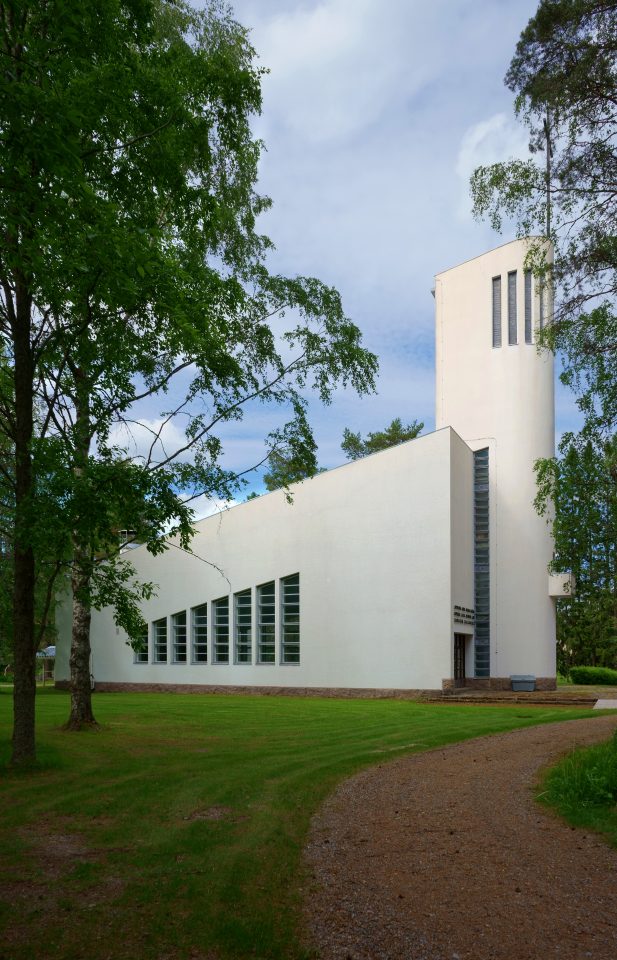- Architect
- P.E. Blomstedt Märta Blomstedt
- Completion
- 1938
- Themes
- Groundbreaking Female Architects
- Category
- Assembly buildings
- Tags
- church DOCOMOMO Functionalism interior design Modernism pioneering female architects sacral
Kannonkoski church is situated near Viitasaari in Central Finland. On its completion, the building dominated the flat rural landscape that opens up towards Lake Syväjärvi. Nowadays, the view is hidden by mature trees. The church, completed after Blomstedt’s death, is the most significant of his preserved works. Together with the churches of Rajamäki, Nakkila, and Varkaus, it is one of the few purely Functionalist church buildings in Finland.
Blomstedt received the commission in 1933 directly from the parish, which had been in contact also with the bishop Jaakko Gummerus. He gave Blomstedt a free hand to design “an inexpensive small church”. After several draft stages, the architect proposed a longitudinal church with a bell tower at one end. The church originally could sit 400, but nowadays 350. The building structure was laid traditionally in brick, but the roof consists of a reinforced concrete beam structure. The solution was typical for modernist buildings of the 1930s, as the formwork technology was not yet sufficiently developed to build complex structures.
The interior space becomes narrower and lower towards the altar, the shape determined by the building’s role in creating good acoustics for the religious services. This also significantly affected the building’s exterior. The tall and narrow windows along the long side walls, like the roof, become lower towards the altar. The curved bell tower at the opposite end is also slanted at the top. Blomstedt’s idea was that the bell tower could also be used as an observation tower. Lower down the tower is a balcony, which was to be used during open-air services as a pulpit.
Following the death of Blomstedt, the design of the church was completed by Märta Blomstedt, assisted by Matti Lampén. In the interior design, she retained the asceticism typical of 1930s modernism. The church does not have an actual choir, but the ceiling curves down to form the rear wall of the altar. The altar is clad with overlapping, and originally unplaned, wooden boards. The shape of the ceiling and the choice of material were determined by the objective to achieve the best possible acoustics. The main church space had an earthy colour scheme, whereas the sacristy had a brighter colour scheme, typical for Functionalism. The original ceiling lamps, made by artisan smith Antti Hakkarainen, have survived, as have the church pews and the pulpit. The only adornment on the altar wall is a verse from the Book of Revelations, “Behold, I make all things new”, and Hannes Autere’s sculpted wooden crucifix to the right of the text is still in its original place. In the most recent renovations, the interior was painted pure white.
Kannonkoski Church is listed on the DOCOMOMO Finland registered selection of important architectural and environmental modernist sites.
Text: Elina Standertskjöld / DOCOMOMO Finland
Location
62.9730891, 25.2542307


